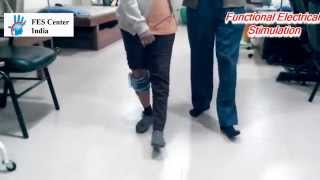Wednesday, 24 December, 2025г.
















Где искать: по сайтам Запорожской области, статьи, видео ролики
пример: покупка автомобиля в Запорожье
Intervention for MS gait and balance impairment – Video abstract [128872]
Video abstract of original research paper “Effects of a multimodal intervention on gait and balance of subjects with progressive multiple sclerosis: a prospective longitudinal pilot study”published in the open access journal Degenerative Neurological and Neuromuscular Disease by Bisht et al.
Purpose: To investigate the effects of a multimodal intervention including a modified Paleolithic
diet, nutritional supplements, stretching, strengthening exercises with electrical stimulation of
trunk and lower limb muscles, meditation and massage on walking performance and balance
of subjects with progressive multiple sclerosis (MS).
Materials and methods: Twenty subjects with mean (standard deviation) age of 51.7 (6.4)
years and Expanded Disability Status Scale score of 6.2 (1) participated in a 12-month study.
Assessments were completed at baseline, 3, 6, 9, and 12 months.
Results: The entire cohort did not show significant changes in any of the assessments over
12 months except higher speed of walking toward the 10 feet mark during timed up and go (TUG)
test at 6 months compared with baseline (mean change 7.9 cm/s [95% confidence interval {CI}]:
0.3, 15.2; p=0.041). Sub-group analysis revealed that 50% subjects (n=10) showed decrease
in TUG time from baseline to at least 3 of 4 time-points post-intervention and were considered
as responders (TUG-Res), the remaining 10 subjects were considered as nonresponders
(TUG-NRes). Over 12 months, TUG-Res showed decreased mean TUG time by 31% (95% CI:
−52%, −2%), increased median Berg Balance Scale scores (42 to 47), 30% increase in mean
timed 25-foot walk speed (greater than 20% considered clinically significant) and increased speed of walk
toward 10 feet mark during TUG by 11.6 cm/s (95% CI: −3.0, 25.9) associated with increases in
step lengths and decrease in step duration. TUG-NRes showed deterioration in walking ability
over 12 months. Comparison of TUG-Res and TUG-NRes showed no significant differences
in adherence to intervention but better stride duration and longer step length at baseline for
TUG-Res than for TUG-NRes (p less than 0.05).
Conclusion: A multimodal lifestyle intervention may improve walking performance and
balance in subjects with progressive MS who have mild-to-moderate gait impairment,
whereas subjects with severe gait impairments may not respond to this intervention. Future
trials should assess effects of this intervention in subjects with MS during early stages of
the disease.
Read the full paper here: https://www.dovepress.com/effects-of-a-multimodal-intervention-on-gait-and-balance-of-subjects-w-peer-reviewed-article-DNND
Теги:
Dove Medical Press dovepress Carver College of Medicine multiple sclerosis Paleolithic dieT Wahls Neurological and Neuromuscular Disease exercise neuromuscular electrical stimulation
Похожие видео
Мой аккаунт


![Intervention for MS gait and balance impairment – Video abstract [128872]](https://pic.portall.zp.ua/mq/6/27/2uj9DrZc51sZq6.jpg) У вашего броузера проблема в совместимости с HTML5
У вашего броузера проблема в совместимости с HTML5


